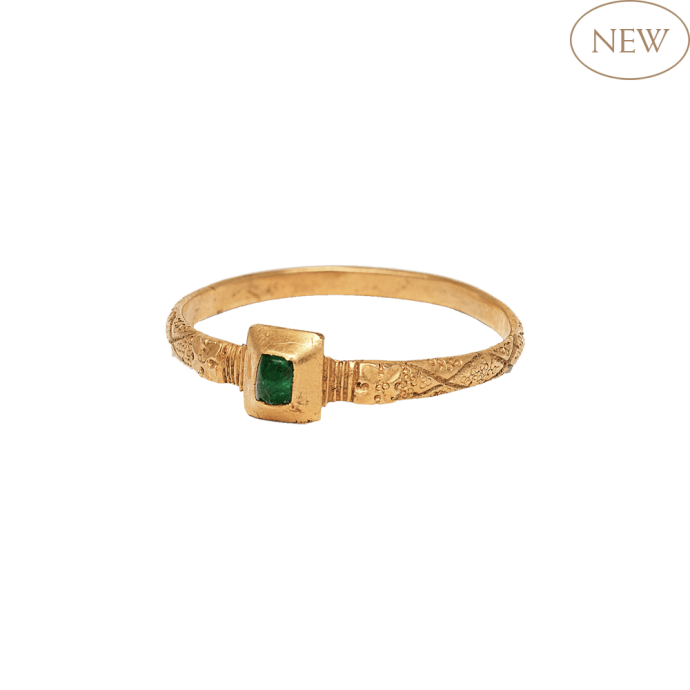


Medieval Gold Ring with Emerald
, England, early 14th century



Medieval Gold Ring with Emerald
Description
Beautiful gold tart mold ring, set with an emerald, dating from fourteenth century England and disclaimed as treasure
Delicate gold hoop with D-section, slightly widened towards the ends with quatrefoil in relief and ridged lines. The interior is plain, the exterior has engraved and punched ornamentation: in the lower half are diagonal bands with accompanying rows of annulets, and the same along the shoulders in a lattice frieze. Set in the pyramidal-style bezel with tapered underside is a cushion-shaped emerald cabochon. The ring shows signs of wear through age and is in good wearable condition.
Provenance:
In 2020 the ring was found in Chipping Ongar, Epping Forrest, Essex (Portable Antiquities Database no. ESS-DA3378)
Literature:
In the Middle Ages throughout Western Europe rings with gemstones were most popular and these were en cabochon, in their natural form, but polished. Each stone had a special meaning for the wearer, such as a love ring, or one with magical and protective qualities. The stones were often imported from faraway countries in the Far East, or Mediterranean area, emeralds in this period are likely to have come from India, see: M Marian Campbell, Medieval Jewellery in Europe 1100-1500, London 2009, p. 28, 33. Medieval lapidaries mention the many beliefs surrounding emeralds which ranged from curing epilepsy, ailments of the eye and even increasing wealth. See also: Claude Lecouteux, A Lapidary of Sacred Stones, Rochester Vermont 2011, pp. 296-300. In the Middle Ages gems were deemed most valuable and thus rings such as this one with gems set in gold were worn by the wealthy members of society.
Due to the shape of the bezel the type is often described as a “pie-dish” or “tart mold” ring. The earliest example is thought to be from the twelfth century, but the design remained highly fashionable into the thirteenth and fourteenth centuries. The design of the hoop is rare and for comparable examples with slight variations, cf. two rings in the Victoria and Albert Museum, London (M183-1962, found in Durham and given to the museum by Joan Evans) and for the ridged ornament in combination with quatrefoils (op.cit. Campbell, pp. 29 and 72).